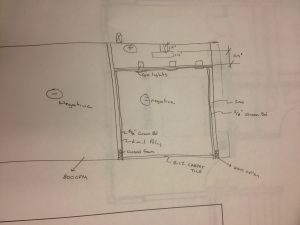Buildings are more complicated now than they have ever been in history. Your home is the most complex and interconnected machine that you own. In order to achieve a high performance home (healthy, energy-efficient, and durable) you need a team working together towards a common goal.
So, is there really friction between the architect and builder as presented in this article?

An Architect is trained to plan and design buildings, and oversees their construction. At least that is what architects used to do before giving up many of their duties in the process to other experts. At one time the Architect was the Master Builder that handled everything including structural design, aesthetics, function, and construction. Today the modern iteration of the architect is often relegated to code compliance and aesthetic solutions. In general, I don’t believe this is a bad thing for the client, although I would add building science, product selection, indoor air quality, and function of the space to the architect’s role.

Again, Buildings are more complicated now than they have ever been in history. It takes an integrated team to pull all the pieces together in a comprehensive, comfortable, user-friendly, efficient, and functional whole. We often work with builders during the design process that can consult on best practices, costs, schedule, and material availability in order to produce the best design solution for a client. In turn, the builder often prefers the architect be involved during construction to keep an eye on design intent and code compliance issues. While I would love to be the Master Builder again, I don’t think it is possible to deliver the highest possible quality solution to a client without having experts on the team from both the design and execution side of the process. Creating a balanced approach such as this and having a team mentality will eliminate tension and lead to successful projects. As our friends at BuilderFish always remind us: “planning from a collaborative approach saves money and time as all the primary players know and understand the process. This eliminates excuses like “I wish I had known.” Good planning on the front end with the entire team more than pays for itself and makes the construction process glide smoothly instead of bumping along.”




